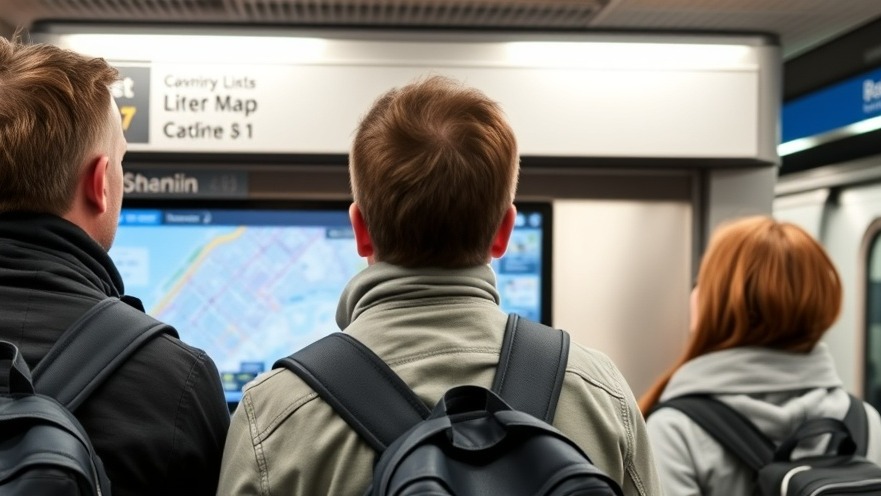
A New Era of Wayfinding: NYC’s Subway Map Revival
New York City has taken a monumental step in enhancing urban navigation for its millions of subway riders by unveiling its first new subway map in decades. Released on April 2, 2025, the redesigned map by the Metropolitan Transportation Authority (MTA) represents a fresh approach to wayfinding that emphasizes simplicity and accessibility. With an estimated 3.6 million daily users, this map isn't just a tool; it's an essential part of the commuting experience in one of the world’s busiest transport networks.
Design Innovations: Emphasizing Clarity and Usability
The new map adopts a clean, geometric style, prioritizing ease of reading over geographic accuracy. The MTA's design team has included bold, straight lines to make navigation intuitive. As Garrett Corcoran, design director for the local graphic studio Order, highlighted, "The role of a transportation map is to provide clarity at key decision points along the rider's journey." This updated design contrasts sharply with its predecessor, which was designed in 1979 and often deemed more complex than necessary.
Accessibility: Meeting Diverse Needs
This redesign is particularly relevant today, as accessibility continues to become an essential concern in public spaces. The new map enhances usability by integrating features that cater to individuals with low vision or cognitive disabilities. The MTA states that the white background, bold colors, and clear typography contribute to a map that is more ADA-friendly. Such changes ensure that all riders, regardless of their abilities, can navigate the subway with confidence.
Lessons from the Past: Inspiration from Timeless Design
The creation of the new subway map doesn’t occur in isolation; it draws inspiration from iconic designs like the 1972 creation by Massimo Vignelli. Both designs share a focus on clarity while embracing a distinct visual language. Michael Bierut, a partner at Pentagram and collaborator with Vignelli, praised the balance that the new design strikes: "It mitigates some of the things that 'normal people' found aggravating about the earlier version." This continuity in style honors New York’s storied design history while providing modern usability.
Digital Integration: Navigating in Real-Time
The updated map comes with additional digital features that are invaluable to modern commuters. real-time information on train movements allows passengers to accurately gauge arrival times and make informed decisions about their journeys. This advancement aligns perfectly with the needs of digital nomads and remote workers, who require not only effective workspace design but efficient transportation links to facilitate their lifestyle.
Implications for Commuters: A Reflection of Urban Identity
For New Yorkers, the subway map is more than just navigation; it’s a symbol of the city's identity. The simplicity and elegance of the new design resonate with the essence of urban metropolitan life. As residents adjust to this new tool, it opens up conversations about how public services can evolve with community feedback and needs, ensuring that the integrity of the city's identity remains intact.
This redesign is not just a change in aesthetics; it signifies a commitment to improving the overall commuting experience. By addressing the concerns of existing users while appealing to new riders, the MTA recognizes the importance of evolving public transport in a way that reflects both historical significance and modern necessity.
Conclusion: Embracing Change in Urban Transportation
As the new subway map begins to circulate, there’s no doubt that it will serve as a vital enhancement to New York City's public transport system. Whether you’re a digital nomad rushing to a coworking space or a tourist navigating the city for the first time, the redesigned map reminds us that evolving urban environments can foster clarity and efficiency—a vital component of any productive workspace.
In light of these developments, consider how effective transportation identifies with your own remote workspace strategy. Take the time to explore your own local transportation options, and see how they can enhance your mobility and productivity. Adaptability is key in today’s fast-paced world.
 Add Row
Add Row  Add
Add 




Write A Comment